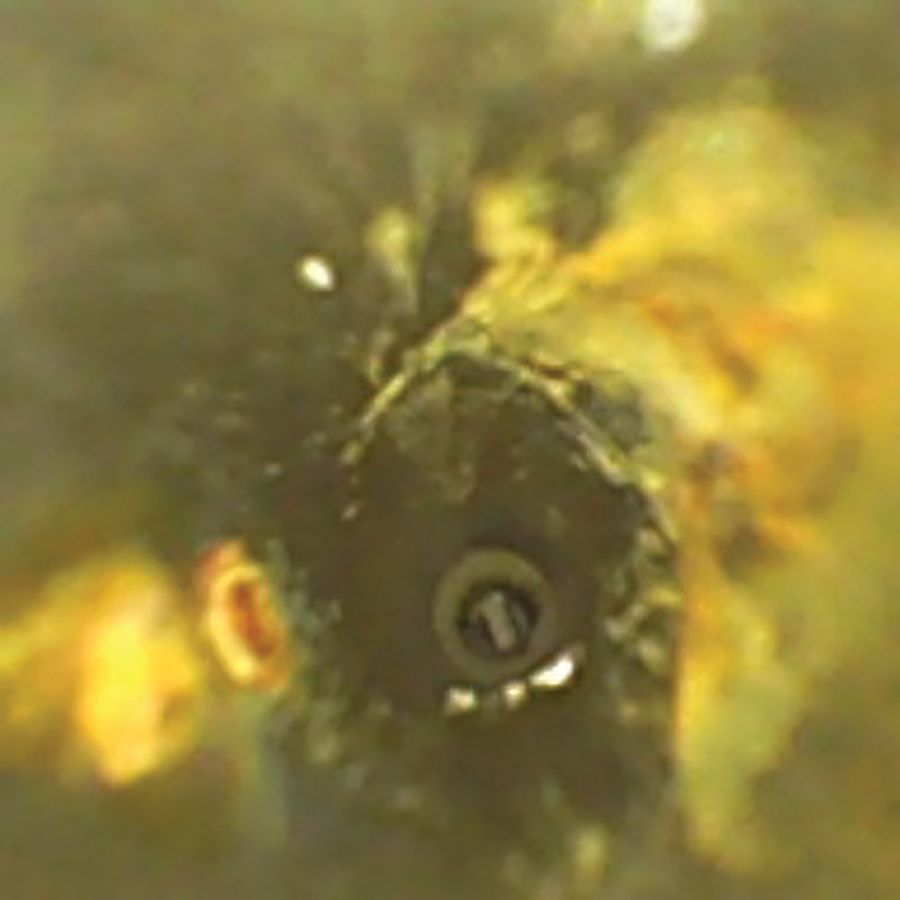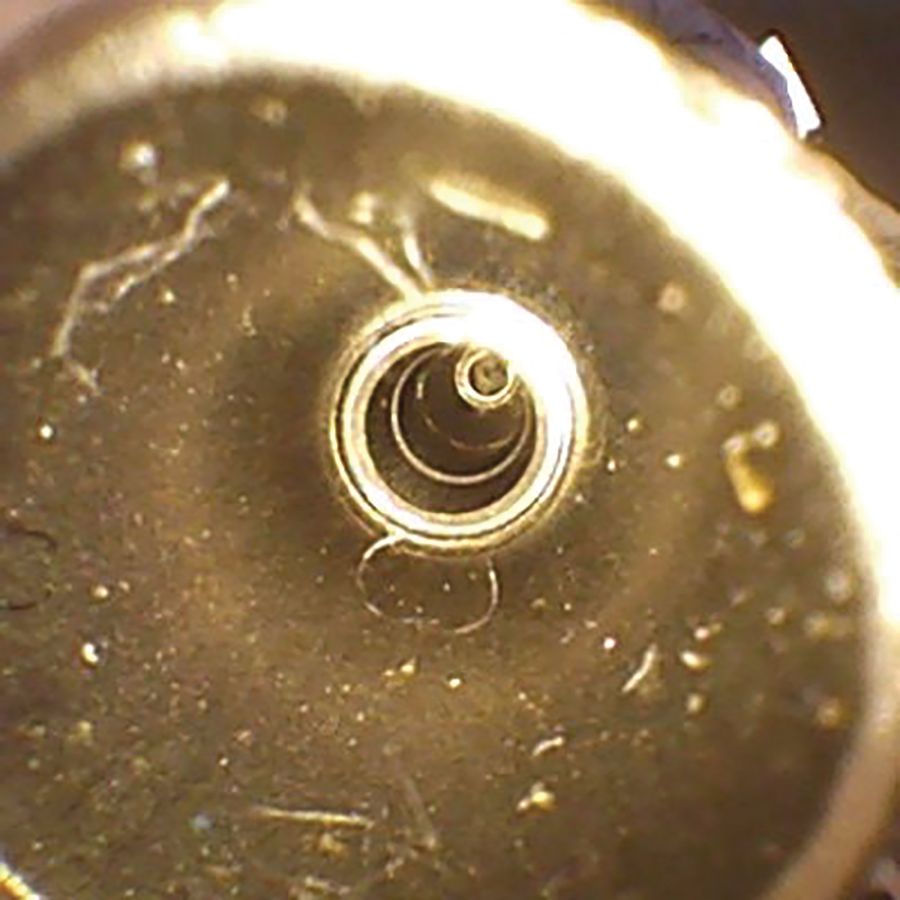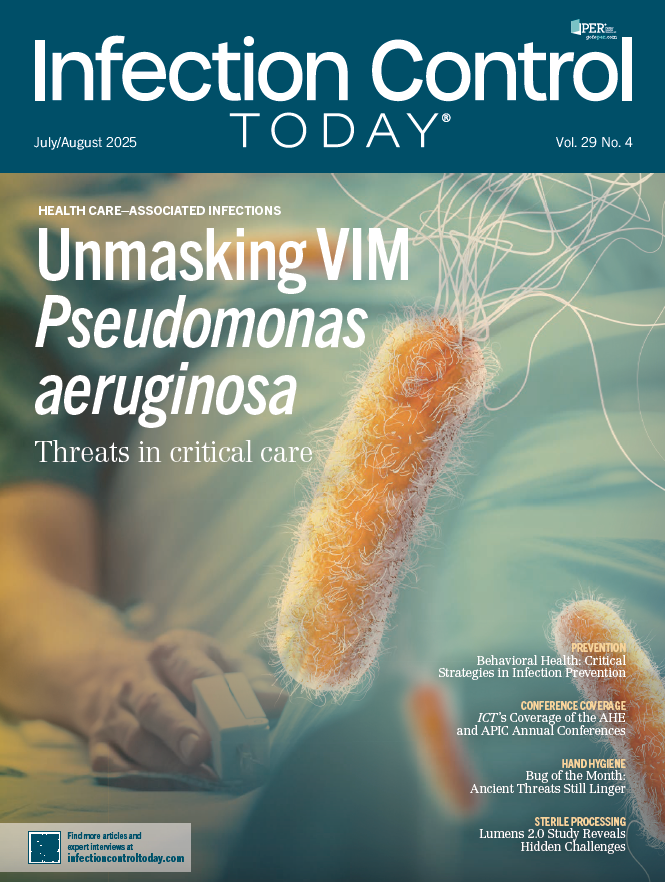Lumens 2.0 Study Results: Borescopes Reveal Hidden Challenges of Cleaning Lumened Surgical Instruments
A groundbreaking study presented at HSPA25 and APIC25 exposed hidden contamination lurking inside orthopedic and neurosurgical instruments—even after cleaning. The Lumens 2.0 research highlights why infection prevention must look deeper than surface-level protocols.
Cori L. Ofstead, MSPH; Brandon M. Gantt, MHA, CRCST, CHL, CER, LSSGBH; and Jill E. Holdsworth, MS, CIC, FAPIC, NREMT, CRCST, CHL

This article is the first in a series of the discussion Infection Control Today had about this study with Cori L. Ofstead, MSPH; Brandon M. Gantt, MHA, CRCST, CHL, CER, LSSGBH; and Jill E. Holdsworth, MS, CIC, FAPIC, NREMT, CRCST, CHL.
In a collaborative research effort between hospital-based infection preventionists (IPs), sterile processing professionals, and epidemiologists, the Lumen 2.0 study revealed unsettling truths about the hidden state of surgical instrument cleanliness. Using borescope technology, the research team visually inspected orthopedic and neurosurgical instruments and found retained debris, corrosion, and physical defects in every instrument studied, regardless of whether the manufacturers’ instructions for use (IFUs) had been followed.
This research, presented at the 2025 Healthcare Sterile Processing Association (HSPA) Annual Conference & Expo held in Louisville, Kentucky, from April 26 to 29, builds on earlier studies and raises serious questions about the adequacy of current cleaning validation standards and the feasibility of real-world implementation of IFUs. The study’s findings echo previous pilot research conducted at LifeBridge Health in Baltimore, Maryland, which also discovered widespread contamination in arthroscopic shavers and suction tips, even after cleaning.
Orange-yellow residue in Sonopet aspirator after recleaning.
(Image credit: Cori Ofstead, MSPH)

The current study extended the investigation to different institutions and manufacturers, using a rigorous multistep cleaning protocol followed by repeated inspections. The results showed not only persistent contamination but also degradation of instruments after only a few uses.
To learn more about the presentation and the study behind it, Infection Control Today (ICT) interviewed Cori L. Ofstead, MSPH, the president and CEO of Ofstead & Associates, Inc, Bloomington, Minnesota; Brandon M. Gantt, MHA, CRCST, CHL, CER, LSSGBH, manager of the sterile processing department education and training at Emory Healthcare; and Jill E. Holdsworth, MS, CIC, FAPIC, NREMT, CRCST, CHL, infection preventionist in Atlanta, Georgia.
Other authors of the study are Abigail G. Smart, MPH, and Larry A. Lamb, AGTS, both with Ofstead & Associates, Inc; and Kevin M. Bush, Jr, DHSc, EdD, FACHE, CPPS, CPHRM, CPHQ, CIC, Perioperative Enterprise Department, Emory Healthcare, Tucker, Georgia.
ICT: What was your presentation about at the HSPA Annual Conference? How does it differ from the one you will give with Jill Holdsworth at the Association for Professionals in Infection Control and Epidemiology (APIC) 2025 Annual Conference & Expo?
Cori L. Ofstead, MSPH: My colleagues from Emory [University Hospital Midtown] and I were presenting case studies from the Lumens 2.0 study.1 At the APIC conference, we’ll present case studies and share numerical data findings from the study. [The name of the APIC presentation was “Infection Preventionists Using Borescopes: New Discoveries in Ortho and Neurosurgery Instruments.”]
The study itself, “Unseen Threats: Lumens 2.0 Study Reveals the Hidden Challenges of Cleaning Lumened Surgical Instruments,” explored the architecture and cleanliness of instruments used for orthopedic neurosurgery and [ear, nose, and throat] surgeries. We accomplished this by inspecting lumens using borescopes. An important aspect of this study is that we aimed to engage in a collaborative effort with my team, which includes research epidemiologists working closely with hospital-based infection preventionists (IPs) and sterile processing professionals, to conduct groundbreaking research that combines all 3 domains. It turned out beautifully, achieving something none of us could have done alone. That was a particularly cool feature of the study.
ICT: What inspired the Lumens 2.0 study, and what specific gaps in cleaning validation were you aiming to address?
CLO: My answer starts with Terra Kremer, PhD. Conventional wisdom has been that endoscopes are the most difficult instruments to clean, but Terra has been doing some work recently, where she suggests that other instruments also have device design features that impact their cleanability. She has a whole list: the lumens, the dead ends, rough surfaces, nooks and crannies, holes, hinges, all those things.2 This raised an issue for us regarding the architecture of instruments that aren’t endoscopes, which aren’t visible. Are they as complex? Are they as difficult, or maybe more difficult, to clean?
We’re using her research as a springboard, and we began by conducting a small pilot study in collaboration with Steven Adams, BA, RN, CER, CHL, CRCST, CIS. He was the president of HSPA [then IAHCSMM] from 2016 to 2018, and he’s an operating room nurse by training. However, he has been running sterile processing for a long time and teaches at the community college, where he developed his own program to get sterile processing technicians certified within his institution.
Two years ago, we looked at arthroscopic shavers and suction tips. We did that because Jahan Azizi, BS, CBET, and his colleagues at the University of Michigan had looked at suction tips and shavers in 2012, and they found [that] 100% of them were dirty.3
We decided to replicate that. We found that no one has researched it since he published that study. We looked inside the same instruments and found that they were all dirty. And Adams and his team tried to clean them after. They saw that they had retained soil and debris, and we discovered that their attempts at recleaning were not effective. Steve decided to [remove from use] all the shavers and contacted the manufacturer, who provided him with new shavers.
Fibrous debris near distal end of 14 cm TPX
(Image credit: Cori Ofstead, MSPH)

He received all new bone shavers from the manufacturer. We were doing borescope exams, so he [inspected] them right away after every use, and by 5 uses, they were all rusty and had other defects inside, which calls into question [whether] these things are durable and cleanable; these are stainless steel instruments, but they’re rusting and developing scratches and other defects soon after use. They’re often used for hundreds of thousands of procedures, so there were some consequences for the manufacturer.
What inspired the study with my Emory colleagues was that I wanted to conduct another study at a different institution to determine the prevalence of the problem. We needed to do a different institution, and we had to inspect additional types of instruments from different manufacturers. Because we don’t want to target any particular vendor, we’re looking at a theme: Is there a more widespread issue?
We wanted to widen that out and apply it to science. We make it more generalizable by examining whether this phenomenon occurs elsewhere. We also wanted to be more systematic in tracking the impact of trying to get them clean through multiple rounds of recleaning. We knew, from Steven, that after a few attempts, it wasn’t working. However, we didn’t have many instruments, so we had to carefully perform very specific tasks in a precise order, following a strict protocol.
In this instance, we adhered to a very strict protocol. Jill [Holdsworth] and I will be presenting that protocol at APIC 2025, where we’ll show exactly what we did and when we reinspected.
We performed up to 4 inspections on the instruments, following additional rounds of cleaning. It would therefore add rigor and significantly expand our understanding of this issue.
References
1. Ofstead CL, Smart AG, Holdsworth JE, Gantt BM, Lamb LA, Bush KM Jr. Unseen threats: Lumens 2.0 study reveals the hidden challenges of cleaning lumened surgical instruments. Am J Infect Control. 2025;53(5):537-547. doi:10.1016/j.ajic.2025.02.003
2. Kremer T, Rowan NJ, McDonnell G. A new quantitative method for determining patient risk for reusable medical device categorization based on using and interpreting Kremer’s cleaning classification system. J Hosp Infect. 2025;155:234-247. doi:10.1016/j.jhin.2024.09.024
3. Azizi J, Anderson SG, Murphy S, Pryce S. Uphill grime: process improvement in surgical instrument cleaning. AORN J. 2012;96(2):152-162. doi:10.1016/j.aorn.2012.03.018
Broadening the Path: Diverse Educational Routes Into Infection Prevention Careers
July 4th 2025Once dominated by nurses, infection prevention now welcomes professionals from public health, lab science, and respiratory therapy—each bringing unique expertise that strengthens patient safety and IPC programs.
How Contaminated Is Your Stretcher? The Hidden Risks on Hospital Wheels
July 3rd 2025Despite routine disinfection, hospital surfaces, such as stretchers, remain reservoirs for harmful microbes, according to several recent studies. From high-touch areas to damaged mattresses and the effectiveness of antimicrobial coatings, researchers continue to uncover persistent risks in environmental hygiene, highlighting the critical need for innovative, continuous disinfection strategies in health care settings.
Broadening the Path: Diverse Educational Routes Into Infection Prevention Careers
July 4th 2025Once dominated by nurses, infection prevention now welcomes professionals from public health, lab science, and respiratory therapy—each bringing unique expertise that strengthens patient safety and IPC programs.
How Contaminated Is Your Stretcher? The Hidden Risks on Hospital Wheels
July 3rd 2025Despite routine disinfection, hospital surfaces, such as stretchers, remain reservoirs for harmful microbes, according to several recent studies. From high-touch areas to damaged mattresses and the effectiveness of antimicrobial coatings, researchers continue to uncover persistent risks in environmental hygiene, highlighting the critical need for innovative, continuous disinfection strategies in health care settings.
2 Commerce Drive
Cranbury, NJ 08512
